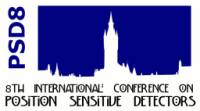Speaker
Dr
Mary Chin
Description
THE GAMMASPHERE is a unique facility for gamma-ray spectroscopy. The spherical array of 110 Compton-suppressed high-purity germanium (HPGe) detectors features a powerful combination of high sensitivity, resolution, granularity and efficiency. Many quantities previously not measurable became possible; breakthroughs continue to emerge across the fields of nuclear physics, particle physics and astrophysics. A GAMMASPHERE experiment to study rare events for positron emission tomography (PET) is an unprecedented luxury. This is true not only in terms of the solid angle and the gamma-ray detection characteristics, but also in terms of the amount of data that may be collected. The GAMMASPHERE provides multi-dimensional data hit-by-hit. We report our experiment carried out at the Argonne National Laboratory. Instead of the beam lines used for nuclear and particle physics, we used fluorine-18 in the form of fluoro-2-deoxyglucose (FDG, the most commonly used PET agent) as the radiation source. The experiment was repeated with biological samples of varying oxygen concentrations. We read the output file byte-by-byte without the use of sorting or analysis software, so that each step of the data processing is completely transparent. We analyse the data hit-by-hit; no hit is dismissed or filtered out unexamined. We present the multivariate correlation between various parameters (e.g. energy, time and angular correlation) as well as the breakdown of hit counts into various components (e.g. the number and the location of Compton-suppressed hits per germanium hit). We demonstrate the rare events (such as annihilations emitting gammas which are not colinear, not 511 keV and even not in pairs) which potentially revolutionalise PET in terms of image reconstruction and molecular imaging.
Author
Dr
Mary Chin

